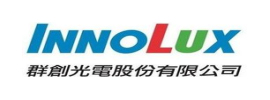The future of China's steel logistics industry

The integrated development of the steel logistics industry is the basic means for improving the efficiency and effectiveness of steel logistics and the necessary guarantee for the development of China's steel logistics industry into an efficient industry. The large annual output of steel and the geographical differences between China's steel production base and steel consumption area determine that any steel enterprise must break through the bottleneck of transportation in order to achieve coverage of the national market.
The competition in the logistics market is mainly manifested as a chain of one-stop services such as warehousing, transportation, packaging, loading and unloading, and handling.
1. The steel logistics industry should take an integrated development path. The development of emerging technologies provides us with some new thinking, new concepts and new methods for establishing corresponding logistics systems. Integration has become a necessary method and means to build a modern logistics system, and it is also an indispensable thought and concept in modern logistics management. The development of electronic information technology provides material premises and possibilities for logistics enterprises to realize the integration of business and functions. Modern logistics problems such as international logistics, regional logistics, external logistics of enterprises, internal logistics of enterprises, etc. can all be solved by a comprehensive and integrated method. The integration of logistics mainly includes information integration, technology integration, process integration, system integration, and environment integration. Information integration includes control and integration of supply information, production information, sales information, transportation tool information, user information, road information, cost information, etc. Technology integration includes communication technology, positioning technology, transportation technology, loading and unloading technology and other scheduling-related integration , Process integration includes comprehensive integration of transportation distribution process, quality control process, cost control process, forecasting decision process, etc. System integration includes logistics subsystem, enterprise logistics system, regional logistics system, multimodal transport, customs clearance and "three inspections" Such as the integration of processes, environment integration includes integration of vehicles, roads, information, traffic control, traffic environment and so on.
The integrated development of the steel logistics industry is the basic means for improving the efficiency and effectiveness of steel logistics and the necessary guarantee for the development of China's steel logistics industry into an efficient industry.
2. Steel warehousing and transportation are the basic guarantee for China's various steel regional markets to move towards coordination and integration. The commonality between the logistics market and the commodity market is to be market-oriented. Steel logistics companies need to grasp relatively sufficient market information and grasp the changes in the supply and demand of logistics services in order to adopt the correct marketing strategy; to recognize the requirements of the steel market for logistics services It is versatile and versatile, instead of simple storage, transportation or home delivery in the past, modern logistics has developed to the stage of integrated logistics and supply chain. The competition in the logistics market is mainly manifested as a chain of one-stop services such as warehousing, transportation, packaging, loading and unloading, and handling. This puts forward higher requirements for logistics companies and transportation companies. Logistics companies at all links must not only compete with each other In addition, there must be cooperation, and full cooperation in all logistics links can ensure that all market players can win in the competition.
3. Steel logistics enterprises should develop to third-party logistics. China's iron and steel enterprises have been "heavy in production and light in circulation" for a long time. They pay more attention to all links in the production field and internal management of the company, but they do not pay enough attention to logistics links such as warehousing, agency, processing, and distribution outside the production field. The segmentation management of transportation and warehousing has resulted in the lack of effective connection between the production, sales and transportation, storage and other logistics links of steel. The efficiency of steel circulation is significantly lower than that of developed countries. The use of third-party logistics can enable steel companies to focus on their core business and better maintain a competitive advantage, while also reducing the company's logistics costs and capital footprint. To become a third-party logistics enterprise does not mean that logistics enterprises must have all the functional elements of modern logistics, the key is to look at the methods and means of providing services, and logistics enterprises can obtain functional elements that the enterprise itself does not have through outsourcing. . It is foreseeable that steel companies need logistics companies to provide them with a more comprehensive modern logistics service, and also have the motivation to outsource some of their logistics functions to logistics companies. Third-party logistics should become a major part of China's steel logistics industry after a period of time.







